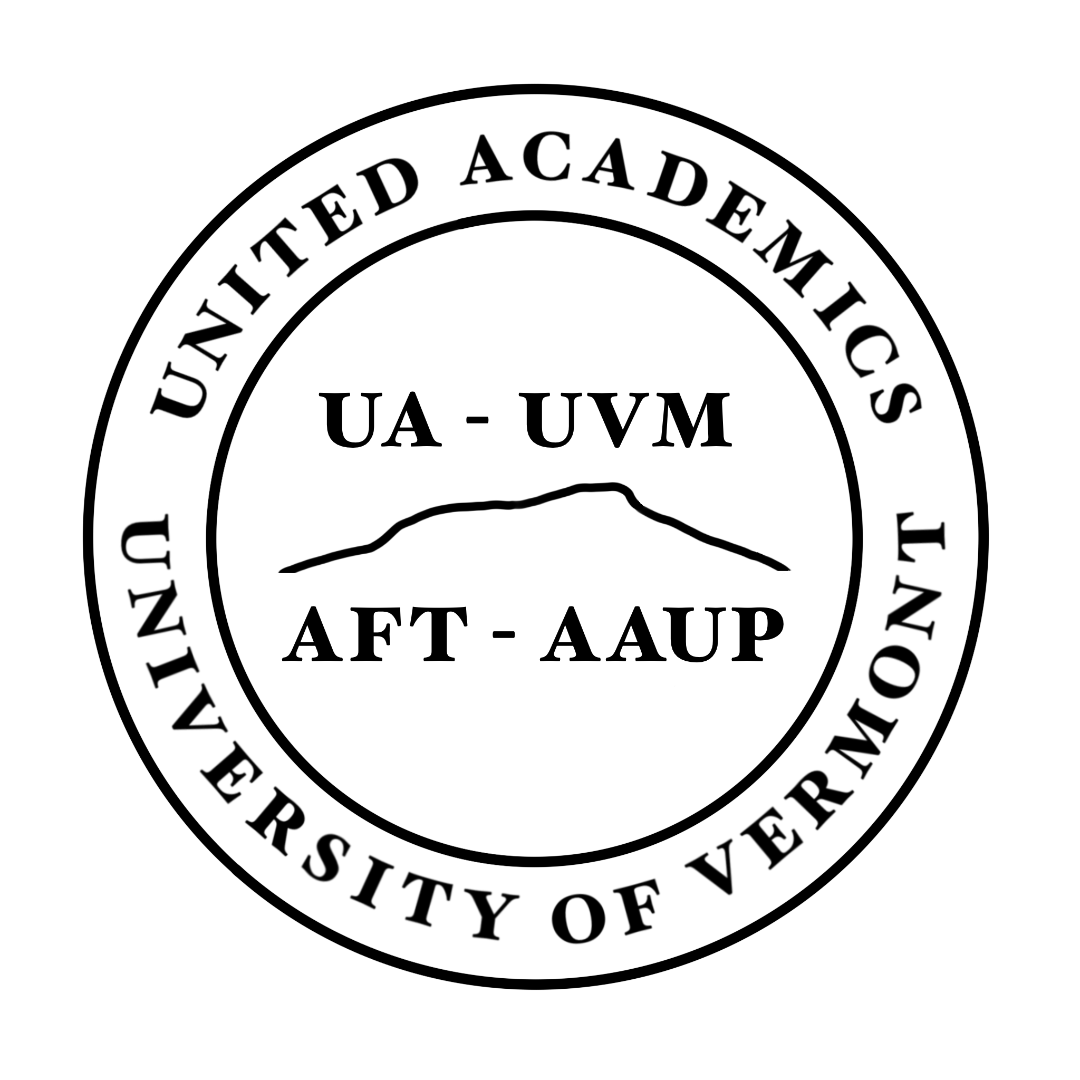UVM union criticizes 'obsession with image', and larger classes, few faculty.
Members of UVM’s faculty union, United Academics, which is in contract negotiations with administration. File photo by Kelsey Neubauer/VTDigger
BURLINGTON — University of Vermont’s faculty union is concerned about cuts in the number of non-tenured lecturers ahead, the cancellation of classes this semester and stalled contract negotiations.
At an event last week, the union said a national trend in higher education that puts an emphasis on marketing and high end infrastructure at the expense of academics has come to UVM.
At an “Open the Books” forum Thursday, United Academics, the union representing UVM faculty said the decision last fall to cut several courses from the College of Arts and Sciences, and recently revealed plans for reductions in the ranks of full-time and part-time lecturers, are symptoms of a larger national trend called “marketization.” Universities everywhere, including UVM, are allocating more money to infrastructure, marketing and student incentives such as merit scholarships in an effort to broaden the university’s appeal.
Beth Mintz, a professor of sociology and a panel member, said the shifts in funding are geared toward attracting more students and improving UVM’s standing in university rankings.
The Open the Books panel examined of the role of UVM’s budgeting formula, known as “incentive based budgeting.” Incentive-based budgeting, or IBB, allots money to colleges based on a number of factors such as enrollment and the cost of offering the class. It is UVM’s version of the responsibility-centered management model in use at public universities across the country.
Implementation of IBB has contributed to a longtime trend away from hiring tenure-track faculty toward the use of non-tenure track lecturers. Lecturers carry larger course loads — as much as double the number of courses as their tenure-track counterparts — and earn a fraction of the salary of a typical tenure-track faculty member, said Nancy Welch, a panel member and a professor of English.
Welch said the university employs 64 fewer assistant professors and 37 more lecturers than it did 12 years ago. This has translated into larger class sizes, she said. Over the course of the past 20 years, many classes have grown by nearly three times their original size.
The university is also investing in infrastructure, such as new dorms, an athletic center and a new library bridge, to draw more students.
“Our argument is not that we think UVM can unbuild the library bridge and give the money to faculty and students,” Welch said. “But we think the simultaneous spending on bridges while cutting courses and faculty is a symptom of larger trends, and these trends can be turned around bit by bit.”
While the College of Arts and Sciences has borne the brunt this year, every college will feel the effects eventually, said Thomas Streeter, a professor of sociology and president of the faculty union.
Panelist Esther Rosen, a UVM junior and editor of the alternative campus newspaper The Water Tower News, said class sizes have grown. The course, Healthy Brains Healthy Bodies, for example, had been open to 15 students the first few years. Now it is a lecture attended by more than 200 students.
Rosen said despite the increase in class size, the course itself is unchanged: Fifty percent of the class grade is attendance. But the large number of students has led to an inevitable slip in educational quality, she said.
Rosen said that while students personally have witnessed the changing face of UVM — as a result of daily navigating construction sites — they question what the payoff is.
“The obsession with image hasn’t been lost on the students,” Rosen said. “The change doesn’t necessarily translate into the student experience.”
The faculty union and the university have been in contract negotiations for the past year. An impasse was declared in September, and in November it was announced that mediation had failed. The issues separating the two parties involve salaries and aspects of faculty intellectual property rights. The next phase of negotiations — fact-finding — is to begin Feb. 12.
“The University is committed to presenting accurate, comprehensive, factual data and information in the fact-finding process,” Wanda Heading-Grant, vice president of human resources, said in a letter emailed Thursday to students.
In an email response Streeter, the uniong president, said “the administration’s thinking is based on a narrow, blinkered, short term set of concerns.”
If the fact-finding phase fails, the university administration and the faculty union each will submit contract proposals to the Vermont Labor Relations Board.
